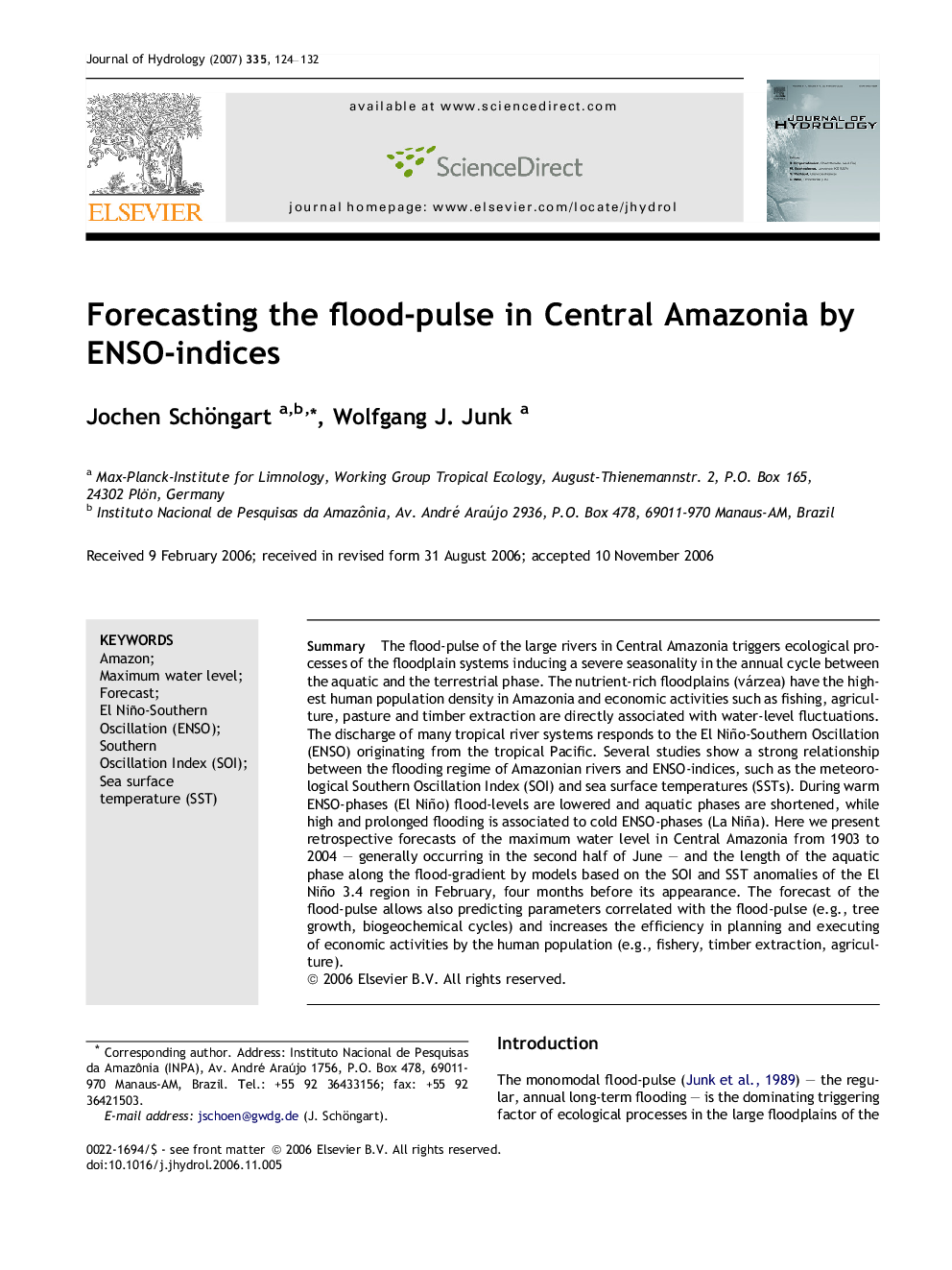| Article ID | Journal | Published Year | Pages | File Type |
|---|---|---|---|---|
| 4579896 | Journal of Hydrology | 2007 | 9 Pages |
SummaryThe flood-pulse of the large rivers in Central Amazonia triggers ecological processes of the floodplain systems inducing a severe seasonality in the annual cycle between the aquatic and the terrestrial phase. The nutrient-rich floodplains (várzea) have the highest human population density in Amazonia and economic activities such as fishing, agriculture, pasture and timber extraction are directly associated with water-level fluctuations. The discharge of many tropical river systems responds to the El Niño-Southern Oscillation (ENSO) originating from the tropical Pacific. Several studies show a strong relationship between the flooding regime of Amazonian rivers and ENSO-indices, such as the meteorological Southern Oscillation Index (SOI) and sea surface temperatures (SSTs). During warm ENSO-phases (El Niño) flood-levels are lowered and aquatic phases are shortened, while high and prolonged flooding is associated to cold ENSO-phases (La Niña). Here we present retrospective forecasts of the maximum water level in Central Amazonia from 1903 to 2004 – generally occurring in the second half of June – and the length of the aquatic phase along the flood-gradient by models based on the SOI and SST anomalies of the El Niño 3.4 region in February, four months before its appearance. The forecast of the flood-pulse allows also predicting parameters correlated with the flood-pulse (e.g., tree growth, biogeochemical cycles) and increases the efficiency in planning and executing of economic activities by the human population (e.g., fishery, timber extraction, agriculture).
